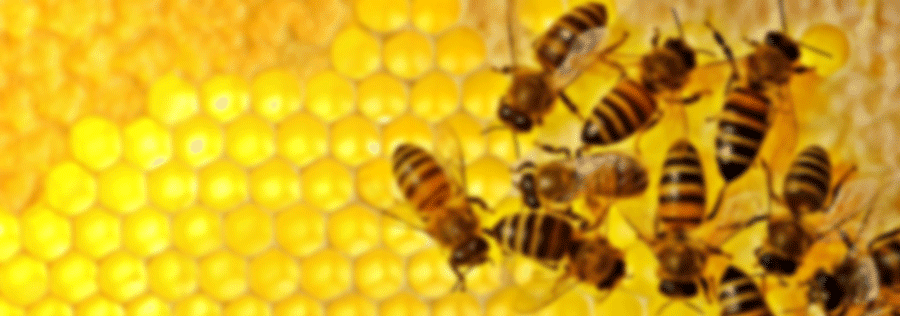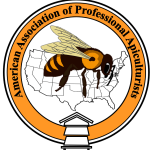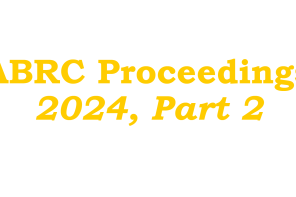Pollen Counts: New Ways To Assess Forage Quality
A clear understanding of the range and diversity of pollen collected by honey bees is important for improving colony health. Pollen from different species differs in protein content and other nutritional traits, and in some cases a multifloral blend of pollen might give bees a stronger start than ample levels of any single species. Scrutinizing bee-collected pollen also provides an efficient way to survey available flowering plants for science and policy decisions. In fact, were it not for the bees, such surveys would require many researcher-lifetimes spent watching flowers or foraging for and counting pollen sources – and it would still require some guesswork to determine the realized value of these pollen sources for bee foragers.
Palynology, the visual study of pollens in order to assign species, is a longstanding field in bee research and plant biology generally. Trained palynologists can discriminate between hundreds of pollen types, and this method has had a big impact on assigning current and past plant distributions. As one example, the Discover Life consortium and Professor Debbie Delaney at University of Delaware have published a helpful visual guide for identifying some North American pollens (http://www.discoverlife.org/mp/20q?guide=Pollen). Gene-based strategies provide a complimentary and extremely effective approach for identifying the plant sources of pollen collected in the environment. Variable DNA regions or ‘barcodes’ can precisely link pollen grains to the plants that produced them. What has card-carrying palynologists worried for their livelihoods is the fact that even hugely complex pollen mixtures can be screened relatively cheaply, without presorting grains. These genetic techniques are now showing their worth in practical studies of forage availability for honey bees and other pollinators.
On the technical side, a gene-based survey of pollen faces two major challenges, the equal extraction of DNA from pollens of all species and the presence of a suitable genetic region that is definitive for all species in a given environment. For the latter, there are strong cases currently for several genetic regions that can be used as barcodes to identify pollen sources. I know my limits and won’t try to rank these, but reputable bee researchers have shown the worth of using the Ribulose bisphosphate carboxylase large chain gene (rbcL; Karen Bell and colleagues, doi:10.3732/apps.1600110) and the ribosomal RNA internal transcribed spacer (ITS) region (Robert Cornman and colleagues, doi:10.1371/journal.pone.0145365). Rodney Richardson and colleagues have contrasted these regions and a third region with microscopic counts in an attempt to show their strengths and weaknesses (doi: 10.3732/apps.1500043). Similarly, Smart and colleagues (doi: 10.1093/ee/nvw159) pitted informative genetic markers against microscopic analyses by knowledgeable palynologists. These studies show some clear challenges involving DNA extraction and ‘equal representation’ faced when using gene-based techniques versus microscopy. Nevertheless, both studies highlight the vast and quantitative insights gained from a well-planned genetic screen.
So, which questions are being addressed using a genetic approach to count pollen? One timely question involves honey bee foraging in the highly productive ‘Prairie pothole’ region of eastern North and South Dakota. This area is a home base for many of the leading commercial beekeepers, in large part thanks to an abundance of natural forage. ‘Wildflowers’ in this region have led to productive honey flows for decades and remain a key resource for the industry. Work led by federal agencies, including the U.S. Geological Survey (USGS, www.npwrc.usgs.gov/pollinator/home) and US Department of Agriculture (USDA), along with the University of Minnesota, has focused on maintaining and improving this resource. Some of this work involves the mapping of changing land-use patterns on a regional scale (e.g., Clint Otto and colleagues, doi: 10.1073/pnas.1603481113). Land-use decisions involve a complex analysis of many factors, including agricultural practices, weather patterns, and the presence of managed and wild bees. Important insights for these decisions are coming equally from field observations as well as computer-based and genetic studies. Gene-based counts of pollen collected by bees, including the recent work in the Dakotas by Smart and colleagues, are playing an increasing role in making sound beekeeping and land management decisions. Beekeepers in the future might use pollen ID’s along with colony survival and honey yields as a measure for determining when and where to place their hives. There is some poetry there in that this is yet another case of harnessing the immense honey bee workforce to give humans a helping hand.
Jay Evans is the Research Leader for the USDA Honey Bee Lab in Beltsville, MD.










